Brushing: Does it Help Hair Growth?

Hair care routines often come with a host of recommendations, and one of the most debated topics is the impact of brushing on hair growth.
While many swear by the benefits of regular brushing, others remain sceptical, questioning whether it’s merely a myth or a proven practice.
But what does science say?
In this article, we delve into the facts and misconceptions surrounding hair brushing and its potential influence on hair growth.
We aim to help you determine if this seemingly simple step deserves a place in your daily routine.
- Does brushing hair stimulate growth?
- Is hair brushing beneficial?
- Is too much brushing bad for you?
- How to brush your hair
- What should you brush your hair with?
- How to stimulate hair growth
Does brushing hair stimulate growth?
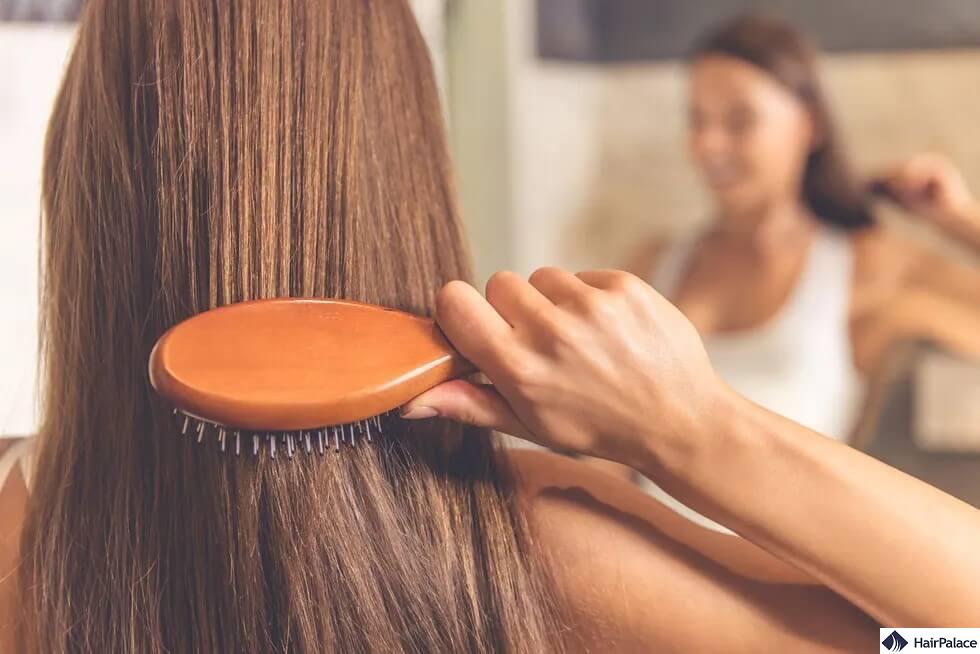
Brushing your hair doesn’t directly stimulate growth, but it can help improve scalp circulation, which might support healthier hair.
Also, brushing distributes natural oils along the hair shaft, enhancing shine and reducing breakage.
However, excessive or aggressive brushing can damage hair and lead to breakage, so it’s important to be gentle and use a suitable brush.
Is hair brushing beneficial?
Hair brushing can be beneficial when done correctly. It helps distribute natural oils from the scalp to the ends, adding shine and moisture.
Brushing also stimulates blood flow to the scalp, supporting a healthy scalp environment. Additionally, it removes loose hairs and detangles, preventing knots and breakage.
However, brushing should be done gently to avoid damage, using a brush suitable for your hair type. Overbrushing or using the wrong brush can lead to hair breakage and split ends.
Is too much brushing bad for you?
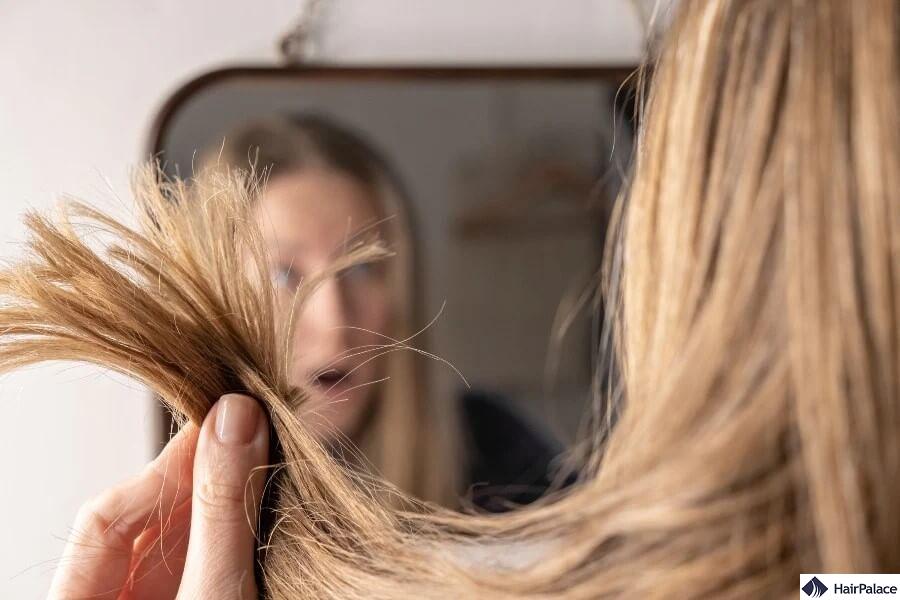
Excessive brushing can be harmful to your hair. Overbrushing can cause friction and stress on the hair strands, leading to breakage, split ends, and even hair loss.
It can also irritate the scalp, causing redness or sensitivity.
To avoid these issues, brush your hair gently, only as needed to detangle and style, and use a brush suitable for your hair type to minimize damage.
How to brush your hair
Ideally, you should always ensure that your hair is dry before brushing it.
- Divide your hair into sections:
- Split your hair into manageable sections. This is particularly helpful for thick or long hair.
- Begin brushing from the ends:
- Start by brushing the ends and work your way up towards the roots. This method prevents tugging and reduces the risk of hair breakage.
- Hold a section of hair firmly as you brush the ends to prevent pulling on the scalp.
- Be gentle with tangles:
- If you encounter a tangle, gently work through it with a detangling brush or your fingers. Avoid yanking or pulling.
- Brush in long, gentle strokes:
- Once your hair is detangled, use long strokes from the roots to the ends. This helps distribute natural oils evenly, making your hair look shinier.
- Brush morning and night:
- Brushing your hair twice a day, morning and night, helps stimulate your scalp and keeps your hair smooth and tangle-free.
- Avoid over-brushing:
- Over-brushing can cause hair breakage and scalp irritation. Stick to brushing a few times to detangle and smooth out your hair.
How to brush wet hair
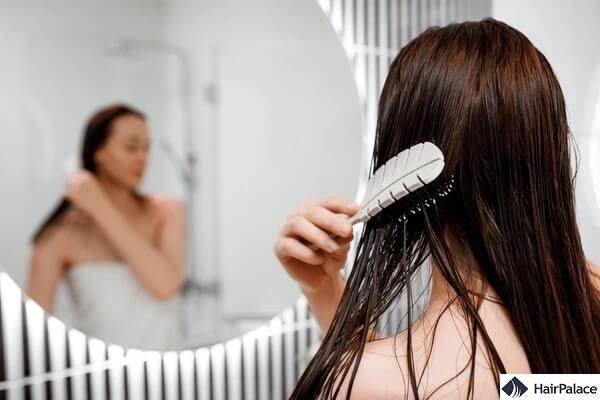
Brushing wet hair requires extra care since hair is more fragile when damp. Here’s how to do it properly:
- Use a Wide-Tooth Comb or Wet Brush: Choose a tool designed for detangling wet hair to prevent breakage.
- Start from the Ends: Begin detangling from the tips and work your way up to the roots to avoid pulling on knots.
- Be Gentle: Apply minimal force and use slow, careful strokes to prevent snapping or stretching the hair.
- Apply a Leave-In Conditioner: Using a leave-in conditioner or detangling spray can help reduce friction and make the process smoother.
- Avoid Brushing If Possible: Whenever you can, use your fingers to gently separate hair or wait until it’s partially dry.
Following these tips can help minimize damage to your wet hair.
What should you brush your hair with?
Choosing the right hairbrush depends on your hair type, texture, and styling needs. Here’s a guide on what to brush your hair with and how to find the ideal brush:
Types of Brushes and Their Uses
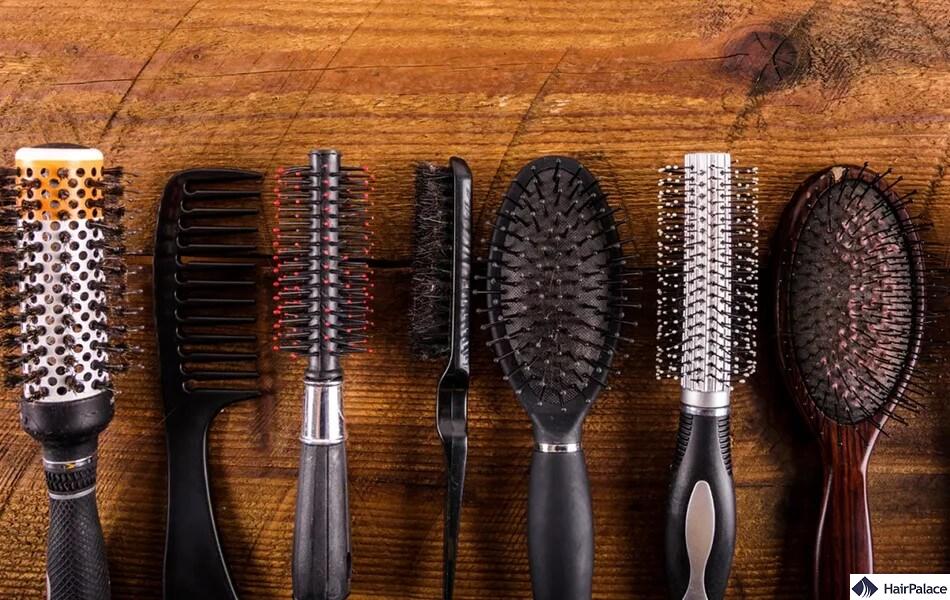
- Wide-Tooth Comb: Great for all hair types, especially curly, wavy, or thick hair. Used for detangling wet hair without causing breakage.
- Paddle Brush: Best for medium to long hair, straight or slightly wavy textures. Used for smoothing and straightening, reducing frizz.
- Round Brush: Ideal for fine to normal hair, short to medium lengths. Used for adding volume, waves, or curls when blow-drying.
- Boar Bristle Brush: Best for fine or straight hair, sensitive scalp. Beneficial for distributing natural oils, adding shine, and smoothing.
- Mixed Bristle Brush (Boar + Nylon): Advised for normal to thick hair. Used to detangle and distribute natural oils for a sleek finish.
- Vented Brush: Suitable for all hair types. Best utilized for blow-drying hair quickly with added volume.
- Detangling Brush: Works for all hair types, including curly and damaged hair. Very efficient at removing knots gently on both wet and dry hair.
How to Choose the Ideal Hair Brush
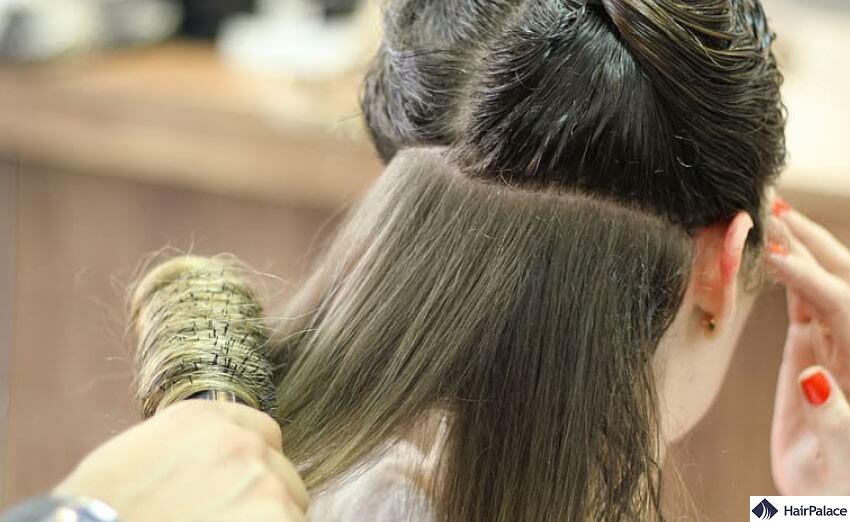
Choosing the ideal tool for hair brushing may prove difficult.
Here’s a comprehensive list of the most important factors you should consider when you make your choice.
1. Identify Your Hair Type:
Opt for a boar bristle or mixed bristle brush to add volume and minimize breakage if you have fine hair.
Choose a paddle brush, a wide-tooth comb, or a detangling brush to prevent damage to thick or curly hair.
A small round brush or vented brush works well for styling and adding lift to short hair.
2. Consider your hair’s needs:
If you struggle with tangles use a detangling brush with flexible bristles.
In case you need volume choose a round brush with vented bristles but if you want a sleek, polished look, opt for a boar bristle brush.
3. Check Bristle Type:
Boar bristles distribute oils, add shine, and reduce static.
Nylon or synthetic bristles are good for detangling and creating stronger hair.
Mixed bristles combine the benefits of both, making them suitable for most hair types.
4. Look at Brush Shape:
Paddle brushes are best for straightening and smoothing.
Round brushes are ideal for creating volume and curls.
Oval brushes are great for general styling and smoothing.
5. Handle comfort
Ensure the brush has a comfortable grip that doesn’t slip, especially if you have long or thick hair that requires more effort to brush.
Choosing the right brush tailored to your hair type and styling preferences will help keep your hair healthier and make daily grooming easier.
How to stimulate hair growth
Stimulating hair growth often involves a combination of topical treatments, supplements, and professional therapies.
Each option targets different aspects of hair health, from improving blood circulation to enhancing hair follicle activity.
Here are some of the most common and effective treatments used to encourage hair growth:
- Hair Transplant Surgery: For severe hair loss, hair follicles are transplanted from denser areas to thinning areas.
- Minoxidil (Rogaine): A topical solution that increases blood flow to hair follicles and prolongs the growth phase of hair.
- Finasteride (Propecia): An oral prescription medication that blocks DHT, a hormone linked to hair loss, primarily used for men.
- Scalp Massage: Regularly massaging the scalp boosts circulation and strengthens hair roots.
- Hair Growth Oils: Essential oils such as rosemary, peppermint, and castor oil have properties that promote hair growth and thickness.
- Low-Level Laser Therapy (LLLT): Laser devices like combs or caps use light to stimulate hair follicles.
- Platelet-Rich Plasma (PRP) Therapy: Involves injecting your own platelet-rich plasma into the scalp to promote hair regrowth.
- Nutritional Supplements: Biotin, zinc, iron, and omega-3 supplements support hair health.
- Microneedling: Tiny needles create micro-injuries in the scalp, which can increase collagen production and enhance the absorption of topical treatments.


